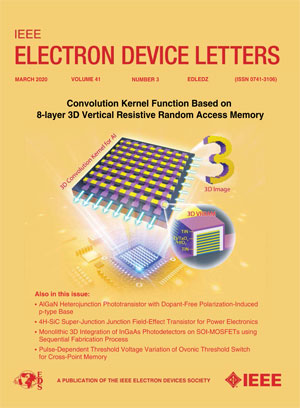1THz低损耗宽带药盒窗口操作的研究
IF 4.5
2区 工程技术
Q2 ENGINEERING, ELECTRICAL & ELECTRONIC
引用次数: 0
摘要
本文提出了一种用于太赫兹(THz)真空电子器件(VEDs)的低损耗宽带药盒窗。为了扩大太赫兹真空窗的几何尺寸,在不引入额外振荡点的情况下,提出了一种新的强耦合过模操作。同时,单晶金刚石(MD)层被用来承受钎焊过程中的应力和大气压力。窗框采用无氧铜(OFC) - Kovar异质集成结构,确保了真空密封性和低损耗传输。该装置具有出色的真空密封性,测量泄漏率为100亿美元。{10}{95} \倍^{\文本{-10}}Pa \ cdot m3 / s美元美元。密封太赫兹MD窗口的冷测试结果表明,在1太赫兹下,插入损耗低(- 3.67 dB),带宽为70 GHz(0.960太赫兹- 1.030太赫兹)。冷试验结果与仿真预测结果吻合较好,验证了强耦合设计在抑制振荡点方面的有效性,以及异质集成结构在降低传输损耗方面的有效性。本文章由计算机程序翻译,如有差异,请以英文原文为准。
Investigation of a Low-Loss Broadband Pill-Box Window Operation Over 1THz
A low-loss broadband pill-box window for Terahertz (THz) Vacuum Electron Devices (VEDs) is proposed in this letter. To enlarge the THz vacuum window geometric size benefiting the fabrication process, a novel strong coupling over-mode operation has been proposed and employed without introducing extra oscillation points over a broad operation band. At the same time, the monocrystalline diamond (MD) layer is used to withstand stresses during the brazing process as well as the atmospheric pressure. The window frames use an Oxygen Free Copper (OFC) - Kovar heterogeneous integrated structure, ensuring both vacuum tightness and low-loss transmission. The fabricated device demonstrated exceptional vacuum tightness, with a measured leak rate of ${6}.{95}\times {10}^{\text {-10}}$ Pa $\cdot $ m3/s. The cold test result of the sealed THz MD window demonstrates a recorded low insertion loss (−3.67 dB) at 1 THz, and a 70 GHz bandwidth (0.960 THz – 1.030 THz). The cold test measurements closely match simulation predictions, validating the effectiveness of the strong coupling design in suppressing oscillatory points and the heterogeneous integrated structure in reducing the transmission loss.
求助全文
通过发布文献求助,成功后即可免费获取论文全文。
去求助
来源期刊

IEEE Electron Device Letters
工程技术-工程:电子与电气
CiteScore
8.20
自引率
10.20%
发文量
551
审稿时长
1.4 months
期刊介绍:
IEEE Electron Device Letters publishes original and significant contributions relating to the theory, modeling, design, performance and reliability of electron and ion integrated circuit devices and interconnects, involving insulators, metals, organic materials, micro-plasmas, semiconductors, quantum-effect structures, vacuum devices, and emerging materials with applications in bioelectronics, biomedical electronics, computation, communications, displays, microelectromechanics, imaging, micro-actuators, nanoelectronics, optoelectronics, photovoltaics, power ICs and micro-sensors.
 求助内容:
求助内容: 应助结果提醒方式:
应助结果提醒方式:


